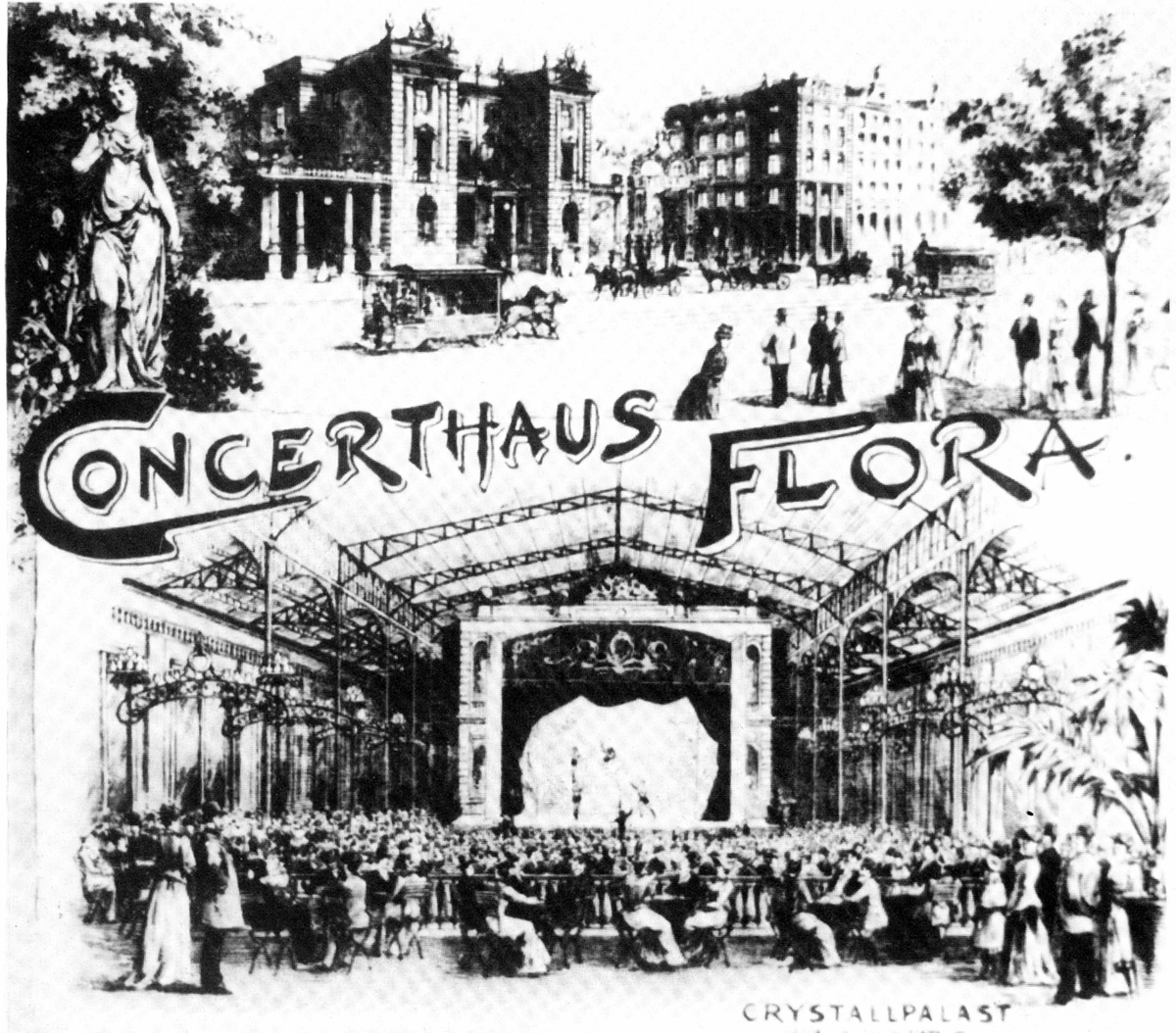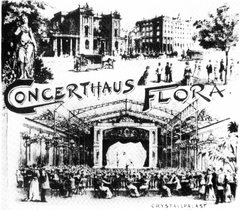
Rote Flora Hamburg: Visiting Hours, Tickets, and Historical Site Guide
Date: 14/06/2025
Introduction
Rote Flora, located in Hamburg’s dynamic Schanzenviertel district, stands as one of Germany’s most significant symbols of grassroots activism, alternative culture, and urban resistance. Established in 1888 as the Flora Theater, the site has evolved over more than a century, reflecting the city’s changing social, cultural, and political landscape. Since its occupation in 1989 by local activists opposing commercial redevelopment, Rote Flora has functioned as a self-managed, autonomous center—serving as a space for concerts, political discussions, community gatherings, and cultural events. Its graffiti-adorned façade and ongoing activism make it an essential destination for visitors interested in Hamburg’s alternative scene and history (rote-flora.de, DW, szene-hamburg.com).
Table of Contents
- Historical Overview
- Cultural and Political Importance
- Visiting Rote Flora: Practical Information
- Community Engagement and Social Impact
- Safety and Visitor Tips
- Frequently Asked Questions (FAQ)
- Conclusion and Legacy
- Sources and Further Information
Historical Overview
Origins and Early Years (1888–1987)
Originally constructed as the Flora Theater in 1888, the building served as a cultural hub for the Schanzenviertel’s working-class and student communities. Over the decades, it adapted to various uses—including a cinema, dance hall, department store, and café—mirroring the district’s evolving urban character (szene-hamburg.com).
Occupation and Autonomous Center (1987–Present)
In the late 1980s, plans to convert the building into a commercial musical theater triggered widespread protest against gentrification. In 1989, local residents and activists occupied the site, transforming it into an autonomous center for political and cultural activities (rote-flora.de). Since then, Rote Flora has remained under collective management, hosting events and initiatives aligned with anti-gentrification, anti-racist, anti-fascist, and feminist principles.
Political Mobilization and Controversies
Rote Flora has played a central role in Hamburg’s protest culture, supporting demonstrations during the G8 and G20 summits and acting as a hub for leftist, countercultural, and activist movements. While lauded by supporters as a vital space for resistance and community organizing, the center has also faced criticism and police confrontations, particularly during high-profile protests (DW).
Cultural and Political Importance
Rote Flora’s influence extends beyond Hamburg. Its consensus-based, non-hierarchical management and rejection of state or commercial funding align it with other European autonomous centers in cities like Berlin, Amsterdam, and Copenhagen (Wikipedia). The center’s programming emphasizes solidarity with marginalized communities, fostering a vibrant scene for music, art, political education, and grassroots activism (Rote Flora 35 Years).
Visiting Rote Flora: Practical Information
Visiting Hours and Entry
Rote Flora does not operate as a conventional tourist attraction—there are no fixed opening hours. Visitors are welcome during scheduled public events, concerts, workshops, and the annual Schanzenfest. The best way to plan a visit is to check the official Rote Flora website or trusted event platforms for up-to-date event information.
- Typical Access: Evenings and weekends, based on programming.
- Spontaneous Visits: The exterior can be viewed at any time. For interior access, attendance at events is required.
Tickets and Fees
- General Entry: Free; the center is non-commercial.
- Event Fees: Some concerts or special events may request a donation or small ticket fee to support operations. These are announced in advance via event listings.
- Guided Tours: Official guided tours are rare. Occasionally, local alternative city tours may include Rote Flora’s exterior.
Accessibility
Due to the building’s age and autonomous management, accessibility for visitors with mobility challenges is limited. Contact the collective directly for specific needs (rote-flora.de).
Getting There
- Address: Schulterblatt 71, 20357 Hamburg
- Public Transport: Sternschanze S-Bahn and U-Bahn stations (lines S11, S21, S31, U3, U2) are within a short walk.
- By Foot/Bike: The Schanzenviertel is pedestrian- and bike-friendly.
Events and Activities
Rote Flora hosts a diverse range of events, including:
- Concerts: From punk and hip-hop to electronic music.
- Workshops: Political education, language classes, legal advice, and more.
- Community Services: Free meals, neighborhood assemblies, bike repair workshops.
- Political Actions: Demonstrations, lectures, and solidarity events.
Check current programming on the official events page or via platforms like Songkick.
Nearby Attractions
The Schanzenviertel district is renowned for its creative, independent spirit:
- Schanzenpark: Green space for relaxation.
- Street Art and Murals: Explore colorful works by local and international artists.
- Cafés, Bars, and Shops: A variety of venues catering to alternative tastes.
- Karoviertel: Neighboring district with boutiques and eateries.
- Altona Street Market: Seasonal local food and crafts.
Photography Guidelines
The building’s exterior is a popular photo subject. Inside, photography is generally discouraged, especially during political events; always seek permission when in doubt.
Community Engagement and Social Impact
Rote Flora is deeply embedded in local activism and community projects. It supports neighborhood initiatives such as flea markets, street festivals, and anti-gentrification campaigns. Funding is sourced through donations, benefit events, and grassroots crowdfunding initiatives (szene-hamburg.com). The center upholds a code of conduct emphasizing inclusivity and respect, and events are often geared toward social justice and solidarity.
Safety and Visitor Tips
Hamburg, and the Schanzenviertel in particular, is generally safe for visitors, including solo travelers. Standard urban safety precautions apply. The area is lively, particularly on weekends, and while political gatherings occur, they rarely affect day-to-day safety (A Backpacker’s World).
- Language: Most activities are in German, but English is widely spoken.
- Accessibility: The building may not be fully accessible; the surrounding neighborhood is flat and easy to navigate.
- Etiquette: Approach Rote Flora with respect—this is an active community space, not just a tourist attraction.
Frequently Asked Questions (FAQ)
What are the visiting hours of Rote Flora?
Rote Flora is open during scheduled public events; check the official website for current schedules.
Is there an entrance fee or ticket required?
Most events are free. Occasionally, donations or tickets are requested for special events.
Are guided tours available?
No regular tours are offered. Some local guides may include Rote Flora in broader alternative city tours.
Is Rote Flora accessible for people with disabilities?
Accessibility is limited; contact organizers for details.
Can I take photos inside?
Photography outside is welcome. Inside, please ask for permission—especially during events.
Conclusion and Legacy
Rote Flora is more than a historic building—it is a living emblem of Hamburg’s enduring tradition of alternative culture, political activism, and community resilience. Its transformation from a 19th-century theater to a hub of radical creativity and resistance highlights the city’s ongoing struggle against gentrification and commercial pressures. Visitors who engage with Rote Flora’s events, explore the vibrant Schanzenviertel, or simply appreciate its iconic façade become part of its ongoing legacy. To make the most of your visit, stay informed via the official Rote Flora website and local event listings. Supporting Rote Flora through attendance, donations, or sharing your experience helps sustain this vital space for cultural and political expression in Hamburg (lonelyplanet.com, DW).
For more insights into Hamburg’s unique cultural landscape, download the Audiala app for interactive guides and updates, and explore related articles on alternative city attractions.
Sources and Further Information
- szene-hamburg.com: Rote Flora 35 Jahre Jubiläum
- Rote Flora Official Website
- DW: Rote Flora – The Center of Hamburg’s Protest Movement
- Rote Flora 35 Years - A Place for Almost Everyone
- Songkick: Rote Flora Events
- Nadir: Rote Flora Initiative
- Wikipedia: Rote Flora (deutsch)
- A Backpacker’s World: Is Hamburg Safe?




















































































